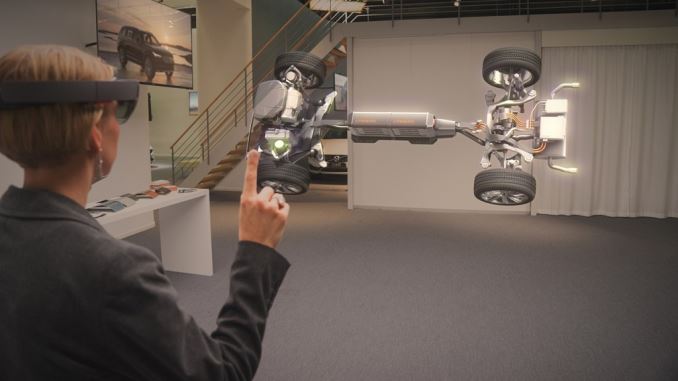Volvo Partners With Microsoft To Bring HoloLens To Automotive Design And Showcasing
by Brett Howse on November 20, 2015 1:00 AM EST
When I first got a chance to use Hololens earlier this year, the immediate and obvious use case that came to mind was going to be in the world of retail for businesses like construction, home remodeling, and architecture, and for design teams working on the latest cars. Today Volvo and Microsoft are announcing a partnership to bring Hololens into the world of automotive design, but also into the showrooms to allow clients the ability to go beyond looking at the skin and feature lists.
I’ve heard and read debate about the first generation of Hololens, and whether or not it should have been a tethered experience, which would increase the compute capability, and to be honest I was not sure where I stood on that argument. My first experience with Hololens certainly showed me the current limitations of the hardware, with a limited field of view where the augmented reality would be, but if it was a tethered device, ideas like the ones that Volvo envisions would not be able to be. Most customers would likely not want to strap on a tethered helmet in a showroom to check out different safety features and choose interior options. I think bringing this untethered technology to the car buying experience makes a lot of sense.
What the partnership is about is really what I’ve felt that Hololens is about. That is, being able to manipulate real world objects in ways that would never be possible before. Augmented reality and virtual reality are really two different things, and I can see them both existing very easily in the same world. The Hololens team has put together this video in relation to the new partnership.
This is really a unique product in the marketplace, and it certainly has a niche that it can fit into. Hololens is still a little way away from being available for purchase, but development editions will start shipping in Q1 of 2016 for $3000. With the steep investment, I would expect that Hololens will be the domain of the large corporation for some time, until the prices can come down a bit. If the hardware can improve, and prices can drop, who knows what the future might hold for augmented reality.
Source: Windows Blog











10 Comments
View All Comments
nathanddrews - Friday, November 20, 2015 - link
Most of that seemed gimmicky (cool, but gimmicky) until this part:https://youtu.be/DilzwF90vec?t=2m7s
If they can scale it down to normal safety goggle size, I could see something like this being a major asset in manufacturing - manufacturing the still utilizes humans, that is.
Manch - Friday, November 20, 2015 - link
Yeah that's the way see it. A bit gimmicky. They can show l that info on a computer screen or youtube video LOL. It would be cool if you were say actually be looking at a floor model of the car that had a blank in place of the dash and you could then switch between what it would look like with certain options or from the exterior see where certain extras are on the car, etc. It needs to actually be interactive with a physical object.arid1 - Friday, November 20, 2015 - link
Michael Crichton talked about something like what's shown at that time stamp in Airframe: https://en.wikipedia.org/wiki/Airframe_%28novel%29There's a scene where the main character puts on an augmented reality headset that highlights parts of the plane for maintenance and construction workers. I think it's based off something Boeing had at the time, but I don't have a source for that.
nathanddrews - Friday, November 20, 2015 - link
Great book.Murloc - Saturday, November 21, 2015 - link
issues with weight and battery life come to mind though.In repetitive activities humans are being replaced regardless so it doesn't matter that much, but I guess that for maintenance of big machines or other complex activities where you have to find stuff and hammer at it there could certainly be an application for this.
DCide - Friday, November 20, 2015 - link
Very interesting Brett - thanks for the write up.Please review the first two paragraphs. I think there are some words missing or that need to be changed. I actually lost much of your meaning toward the middle/end of the second paragraph.
BMNify - Friday, November 20, 2015 - link
Hololens will make a good use case for corporations and professionals in construction, medical, architect, designing etc. Good enough for V.1 product, should get much better with V.2 and V.3 as FOV becomes better and costs go down.Alexvrb - Sunday, November 22, 2015 - link
Yeah exactly so. Better to release what they have now, bringing developers and customers onboard earlier in the lifecycle, and then continue to iterate.Lord 666 - Friday, November 20, 2015 - link
The list of Hololens grant recipients and their use cases are listed here; https://blogs.windows.com/devices/2015/11/11/meet-...Miller1331 - Tuesday, December 1, 2015 - link
Its official, we are living in the future ladies and gentlemen... now where's my hoverboard?